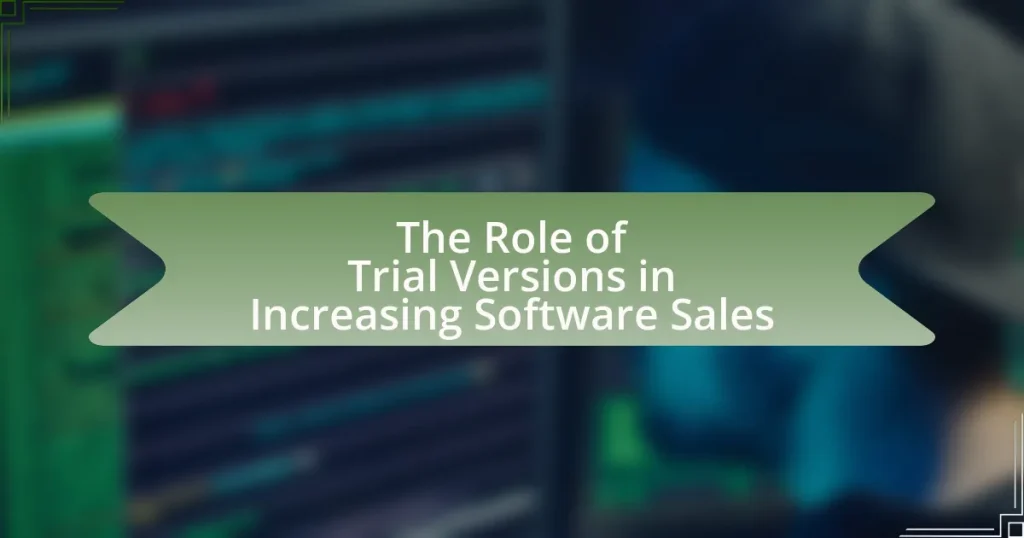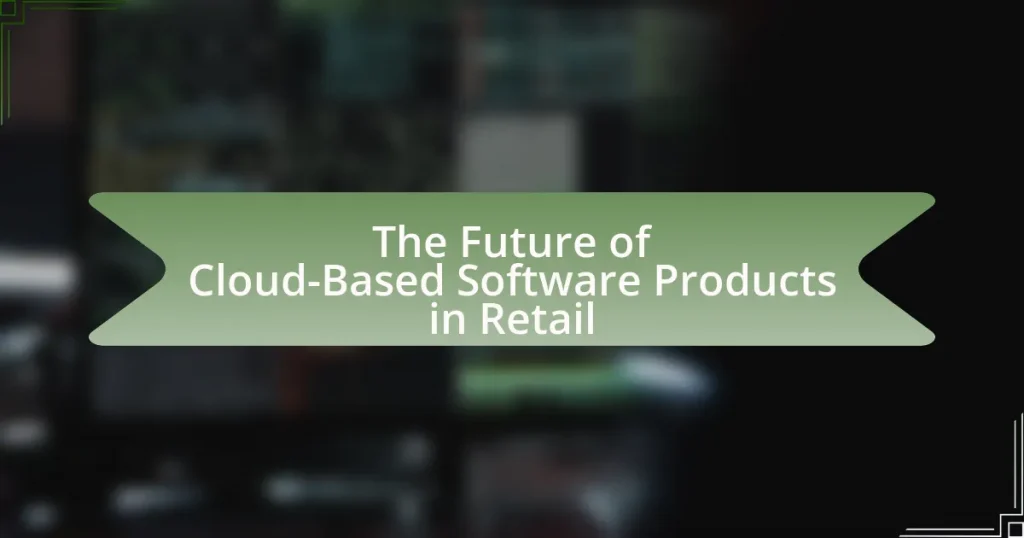Licensing models in retail are essential frameworks that enable businesses to legally utilize another company’s brand or intellectual property in exchange for fees or royalties. This article provides a comprehensive overview of how these models function, their key components, and their impact on retailers. It explores various types of licensing agreements, including exclusive and non-exclusive licensing, and discusses the financial implications and potential risks associated with these arrangements. Additionally, the article highlights best practices for managing licensing agreements effectively, including communication strategies and compliance metrics, to ensure successful partnerships and maximize revenue potential.
What are Licensing Models in Retail?
Licensing models in retail are frameworks that allow businesses to legally use another company’s brand, trademark, or intellectual property in exchange for a fee or royalty. These models enable retailers to expand their product offerings and leverage established brand recognition without the need for extensive investment in brand development. For example, a retailer may license a popular character from a movie to create themed merchandise, benefiting from the character’s existing fan base. This approach not only enhances product appeal but also drives sales through association with well-known brands.
How do licensing models function in the retail industry?
Licensing models in the retail industry function by allowing retailers to sell products under a brand name or trademark owned by another entity, typically in exchange for a fee or royalty. This arrangement enables retailers to leverage established brand recognition and customer loyalty, which can drive sales and enhance market presence. For example, a clothing retailer may obtain a license to produce apparel featuring a popular character from a movie, thus attracting fans of that franchise. According to a report by the International Licensing Industry Merchandisers’ Association, the global licensing industry generated over $292 billion in retail sales in 2020, highlighting the significant impact of licensing on retail revenue.
What are the key components of a licensing model?
The key components of a licensing model include the license agreement, royalty structure, duration of the license, territory, and scope of use. The license agreement outlines the terms and conditions under which the licensee can use the licensor’s intellectual property. The royalty structure defines the payment terms, often based on sales or a fixed fee. The duration specifies how long the license is valid, while the territory delineates the geographical area where the license applies. Finally, the scope of use clarifies the specific ways in which the licensed material can be utilized. These components are essential for establishing clear expectations and legal protections for both parties involved in the licensing arrangement.
How do licensing agreements impact retailers?
Licensing agreements significantly impact retailers by allowing them to sell branded products without owning the brand. This arrangement enables retailers to expand their product offerings, attract more customers, and increase sales through popular licensed brands. For instance, retailers like Target and Walmart often utilize licensing agreements to feature exclusive merchandise from well-known franchises, which can lead to higher foot traffic and customer loyalty. According to a report by IBISWorld, the licensed merchandise industry generates over $262 billion in retail sales annually, illustrating the financial benefits for retailers who engage in such agreements.
What types of licensing models exist for retailers?
There are several types of licensing models that exist for retailers, including exclusive licensing, non-exclusive licensing, and franchise licensing. Exclusive licensing grants the retailer sole rights to sell a brand’s products within a specific territory, which can enhance brand loyalty and market presence. Non-exclusive licensing allows multiple retailers to sell the same brand, increasing market reach but potentially diluting brand identity. Franchise licensing involves a retailer operating under a brand’s name and business model, providing a structured approach to retailing with established operational guidelines. Each model serves different strategic purposes and can significantly impact a retailer’s business operations and profitability.
What is the difference between exclusive and non-exclusive licensing?
Exclusive licensing grants a licensee sole rights to use a particular intellectual property, meaning the licensor cannot grant the same rights to any other party. In contrast, non-exclusive licensing allows multiple licensees to use the same intellectual property simultaneously. This distinction is crucial for retailers as exclusive licenses can create competitive advantages by limiting market access for others, while non-exclusive licenses can lead to broader distribution and increased revenue opportunities for the licensor.
How do franchise models differ from licensing agreements?
Franchise models differ from licensing agreements primarily in the level of control and support provided by the franchisor. In a franchise model, the franchisor grants the franchisee the right to operate a business using its brand, systems, and ongoing support, including training and marketing. This relationship is typically more structured, with specific operational guidelines that the franchisee must follow. In contrast, licensing agreements allow the licensee to use a brand or intellectual property with less oversight and support from the licensor, focusing mainly on the rights to use the brand rather than the operational aspects of running a business. This distinction highlights that franchises involve a comprehensive business model with ongoing relationships, while licensing is more transactional and limited in scope.
Why are licensing models important for retailers?
Licensing models are important for retailers because they enable access to established brands and intellectual property, which can enhance product offerings and attract customers. By leveraging licensing agreements, retailers can diversify their inventory with popular branded products, thereby increasing sales potential and market competitiveness. For instance, a study by the International Licensing Industry Merchandisers’ Association reported that the global licensing industry generated over $280 billion in retail sales in 2020, highlighting the significant impact of licensing on retail revenue.
How can licensing models enhance product offerings?
Licensing models can enhance product offerings by allowing companies to leverage established brands and intellectual property to create new products. This approach enables retailers to expand their product lines without the need for extensive research and development, as they can utilize existing brand recognition and customer loyalty. For example, the licensing of popular characters from movies or television shows can attract a specific consumer demographic, leading to increased sales. According to a report by the Licensing Industry Merchandisers’ Association, licensed products accounted for over $280 billion in retail sales globally in 2019, demonstrating the significant impact of licensing on product offerings.
What role do licensing models play in brand expansion?
Licensing models play a crucial role in brand expansion by allowing companies to leverage their intellectual property to enter new markets and reach broader audiences. Through licensing agreements, brands can partner with manufacturers or retailers who produce and sell products under the brand’s name, thereby increasing visibility and market penetration without the need for significant capital investment. For instance, the global licensing market was valued at approximately $292 billion in 2021, highlighting the substantial economic impact and growth potential associated with effective licensing strategies. This model not only enhances brand recognition but also generates additional revenue streams, making it a vital component of modern brand expansion strategies.
What should retailers consider when choosing a licensing model?
Retailers should consider the alignment of the licensing model with their brand strategy and target market. This alignment ensures that the chosen model supports the retailer’s overall business objectives and resonates with the intended consumer demographic. For instance, a retailer targeting a premium market may opt for exclusive licensing agreements to maintain brand prestige, while those in a mass-market segment might choose more accessible licensing options to maximize reach. Additionally, retailers must evaluate the financial implications, including upfront costs, royalties, and potential revenue streams, as these factors directly impact profitability. Understanding the legal aspects, such as intellectual property rights and compliance requirements, is also crucial to avoid potential disputes and ensure smooth operations.
What factors influence the selection of a licensing model?
The selection of a licensing model is influenced by several key factors, including the nature of the product, market demand, and the strategic goals of the business. The product’s characteristics determine the appropriateness of certain licensing types; for instance, technology products may require exclusive licensing to protect intellectual property. Market demand influences the licensing model as businesses must align their offerings with consumer preferences and competitive dynamics. Additionally, strategic goals, such as revenue generation or brand expansion, guide the choice of licensing model, as companies may opt for different approaches based on their long-term objectives.
How do market trends affect licensing decisions?
Market trends significantly influence licensing decisions by shaping the demand for products and the perceived value of brands. For instance, a rise in consumer interest in sustainable products can lead companies to seek licenses for eco-friendly brands, as evidenced by the 2021 Nielsen report indicating that 73% of consumers are willing to change their consumption habits to reduce environmental impact. Additionally, trends in technology, such as the increasing popularity of digital content, can prompt licensors to adapt their offerings to include digital rights, reflecting the 2022 Statista survey showing that 82% of consumers prefer digital formats for media consumption. Thus, understanding and responding to market trends is crucial for making informed licensing decisions that align with consumer preferences and maximize revenue potential.
What are the financial implications of different licensing models?
Different licensing models have distinct financial implications that can significantly affect a retailer’s profitability and cash flow. For instance, a royalty-based licensing model typically requires the retailer to pay a percentage of sales to the licensor, which can reduce profit margins but may also lead to increased sales due to brand recognition. Conversely, a flat fee licensing model involves a one-time payment, allowing for predictable costs but potentially limiting the retailer’s ability to leverage brand popularity for higher sales. Additionally, exclusive licensing agreements can lead to higher upfront costs but may provide a competitive advantage and increased market share, ultimately impacting long-term revenue. These financial dynamics highlight the importance of selecting a licensing model that aligns with the retailer’s business strategy and financial goals.
What are the potential risks associated with licensing models?
The potential risks associated with licensing models include loss of control over brand image, financial instability, and legal complications. Retailers may face challenges in maintaining consistent quality and brand representation when third parties are involved, which can lead to consumer dissatisfaction and damage to the brand’s reputation. Financial instability can arise from reliance on licensees who may not meet sales expectations or fulfill contractual obligations, potentially resulting in revenue loss. Additionally, legal complications can occur due to disputes over intellectual property rights, compliance with licensing agreements, or regulatory issues, which can lead to costly litigation and operational disruptions.
How can retailers mitigate risks in licensing agreements?
Retailers can mitigate risks in licensing agreements by conducting thorough due diligence on potential licensors and ensuring clear contract terms. This involves assessing the financial stability, reputation, and market presence of the licensor to avoid partnerships that could lead to financial loss or brand damage. Additionally, retailers should include specific clauses in the licensing agreement that outline performance metrics, termination rights, and dispute resolution processes, which can protect their interests and provide a clear course of action in case of non-compliance. By implementing these strategies, retailers can significantly reduce the likelihood of encountering issues that could jeopardize their business.
What common pitfalls should retailers avoid in licensing?
Retailers should avoid common pitfalls in licensing such as inadequate due diligence, unclear contract terms, and lack of brand alignment. Inadequate due diligence can lead to partnerships with licensors that do not align with the retailer’s values or customer base, resulting in poor sales performance. Unclear contract terms may create disputes over royalties, usage rights, and responsibilities, which can damage relationships and lead to legal issues. Additionally, a lack of brand alignment can confuse customers and dilute brand identity, ultimately harming the retailer’s reputation and market position.
How can retailers effectively manage licensing agreements?
Retailers can effectively manage licensing agreements by establishing clear communication channels with licensors and implementing robust tracking systems for compliance. Clear communication ensures that both parties understand expectations, responsibilities, and any changes in terms, which can prevent misunderstandings and disputes. Implementing tracking systems allows retailers to monitor product performance, royalty calculations, and adherence to brand guidelines, thereby ensuring compliance with the terms of the agreement. According to a study by the International Licensing Industry Merchandisers’ Association, effective management of licensing agreements can lead to a 20% increase in revenue for retailers who actively engage in these practices.
What best practices should retailers follow in licensing management?
Retailers should follow best practices in licensing management by establishing clear agreements, conducting regular audits, and maintaining open communication with licensors. Clear agreements define the terms of use, ensuring both parties understand their rights and obligations, which minimizes disputes. Regular audits help retailers ensure compliance with licensing terms, thereby avoiding potential legal issues and financial penalties. Open communication fosters a collaborative relationship with licensors, allowing for timely updates and adjustments to licensing agreements as market conditions change. These practices collectively enhance operational efficiency and protect the retailer’s brand integrity.
How can communication with licensors be optimized?
Communication with licensors can be optimized by establishing clear, consistent channels of communication and utilizing technology for real-time updates. Implementing regular check-ins and feedback loops ensures that both parties are aligned on expectations and objectives. Additionally, using project management tools can facilitate transparency and accountability, allowing licensors to track progress and address concerns promptly. Research indicates that effective communication can lead to a 25% increase in project efficiency, highlighting the importance of structured interactions in licensing agreements.
What tools can assist in managing licensing agreements?
Software solutions such as contract management systems, digital rights management tools, and licensing management platforms can assist in managing licensing agreements. These tools streamline the process of tracking, negotiating, and enforcing licensing terms, ensuring compliance and reducing the risk of disputes. For instance, contract management systems like DocuSign and ContractWorks provide features for document storage, version control, and automated reminders for renewal dates, which enhance organization and efficiency in managing agreements. Digital rights management tools, such as Adobe Experience Manager, help protect intellectual property by controlling access and usage rights. Licensing management platforms, like FlexNet Manager, offer comprehensive oversight of software licenses, ensuring that organizations remain compliant with licensing agreements and optimize their software usage.
What are the key performance indicators for licensing success?
The key performance indicators for licensing success include revenue generated from licensing agreements, market share growth, brand recognition and awareness, and the number of active licensing partnerships. Revenue generated from licensing agreements directly reflects the financial success of the licensing strategy, while market share growth indicates the effectiveness of the licensing model in expanding the brand’s presence in the market. Brand recognition and awareness can be measured through consumer surveys and brand tracking studies, which demonstrate how well the licensed products resonate with the target audience. Lastly, the number of active licensing partnerships showcases the brand’s ability to attract and maintain relationships with licensees, which is crucial for sustained growth and success in licensing.
How can retailers measure the effectiveness of their licensing models?
Retailers can measure the effectiveness of their licensing models by analyzing key performance indicators (KPIs) such as sales growth, market share, and customer engagement metrics. These KPIs provide quantifiable data that reflects the financial impact and consumer response to licensed products. For instance, a study by the Licensing Industry Merchandisers’ Association (LIMA) reported that licensed products can generate up to 20% higher sales compared to non-licensed counterparts, indicating a strong correlation between licensing and revenue growth. Additionally, retailers can conduct consumer surveys to assess brand perception and loyalty, further validating the success of their licensing strategies.
What metrics should be tracked to ensure compliance?
To ensure compliance, retailers should track metrics such as licensing agreement adherence, audit results, and regulatory compliance rates. Licensing agreement adherence measures how well retailers follow the terms set forth in their contracts, which is crucial for maintaining legal standing. Audit results provide insights into operational practices and highlight areas of non-compliance, while regulatory compliance rates reflect the percentage of operations that meet industry regulations. Tracking these metrics allows retailers to identify compliance gaps and take corrective actions, thereby minimizing legal risks and enhancing operational integrity.
What practical tips can retailers implement for successful licensing?
Retailers can implement several practical tips for successful licensing, including conducting thorough market research to identify suitable brands and products that align with their target audience. This approach ensures that the licensed products resonate with consumers, increasing the likelihood of sales. Additionally, establishing clear agreements with licensors regarding terms, royalties, and responsibilities is crucial for maintaining a positive relationship and avoiding disputes.
Furthermore, retailers should focus on effective marketing strategies that highlight the unique aspects of the licensed products, leveraging social media and in-store promotions to attract attention. Collaborating with licensors on co-branded marketing campaigns can also enhance visibility and consumer engagement.
Lastly, monitoring sales performance and consumer feedback allows retailers to adjust their strategies and optimize their licensing agreements over time, ensuring ongoing success in the competitive retail landscape.



